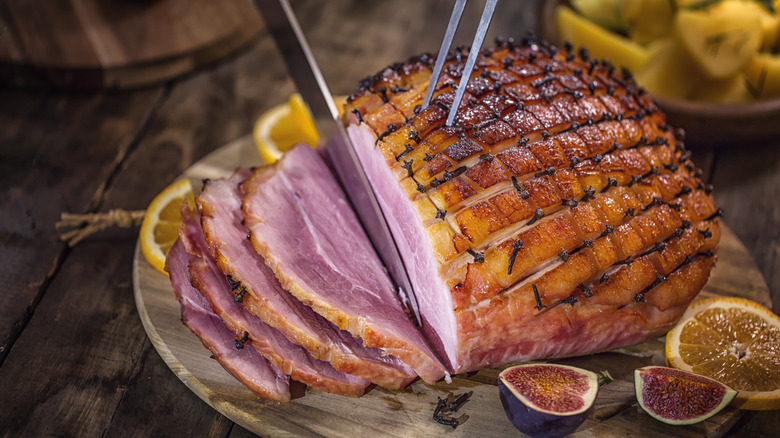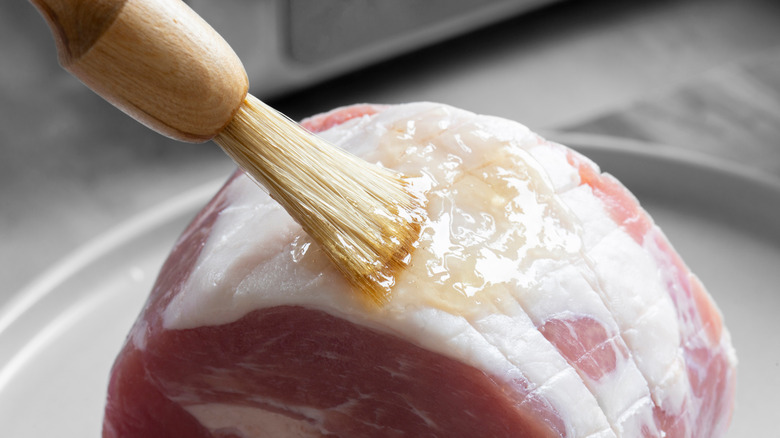When Is The Ideal Time To Glaze A Delicious Holiday Ham?
Glazing a ham can enhance the food with some extra flavoring, and there are quite a few different ingredients that you can use to create your glaze. Honey and brown sugar could add a little bit of sweetness to the salty, savory dish. Fruits like apples, peaches, or cherries could add another dimension of flavor to the protein. You can even take the easy route with a 2-ingredient glaze of mustard and jam.
When you're getting the glaze just right on your holiday ham, timing is everything. In order to get the glaze on the ham perfect, you'll want to allow the unglazed ham to bake on its own for a while. Then, you can brush on the glaze when the ham is almost done cooking. The ideal time to add it is when there's about half an hour left of the total cook time. If you'd prefer to wait a little longer, the glaze can also be applied with as little as 15 minutes remaining. If you add the glaze too early, you run the risk of ruining the exterior of the food.
An early glaze could lead to burning
When you glaze the ham prior to baking, or if you brush it on too early, it could cause the exterior to burn and taste charred. Most glazes contain some kind of sugar, either granulated or from fruit. That sugar then caramelizes on the exterior of the ham. When done correctly, this can add a warm, sweet flavor note to the food. However, if the glaze is exposed to heat for extended periods of time, the caramelization may turn into burnt sugar. The heat can extend to the skin of the ham and burn that, too.
In addition to preventing burning, waiting to apply the glaze could also benefit its application. Preparing the glaze while the ham cooks will give it some time to rest and thicken up before being brushed on. When the glaze is ready and the ham has mostly baked, a thicker glaze may be more likely to stick to the ham. If you have already accidentally brushed your glaze on too early, don't panic. You may still be able to salvage the skin.
How to prevent glaze from burning
There may be a few ways to prevent the outside of the ham from burning, even if the glaze goes on too early. If your ham has already cooked to a safe internal temperature, you may be able to turn down the heat. The lower temperature could prevent the sugary glaze from burning. You may need to leave the ham in the oven for a little longer, however, since the lower temperature will mean a slower cook.
You could also protect the ham with a little bit of foil. Loosely covering the dish will allow the ham to continue baking while retaining some of the moisture. If the glaze doesn't dry out, it won't burn as easily. If you want the ham to brown, you will need to remove the foil a little bit before you take the ham out of the oven. When you're cooking a ham for the holidays, it's best to avoid potential burning altogether. Save the glaze for the last stretch of the bake time in order to get the best caramelization.


